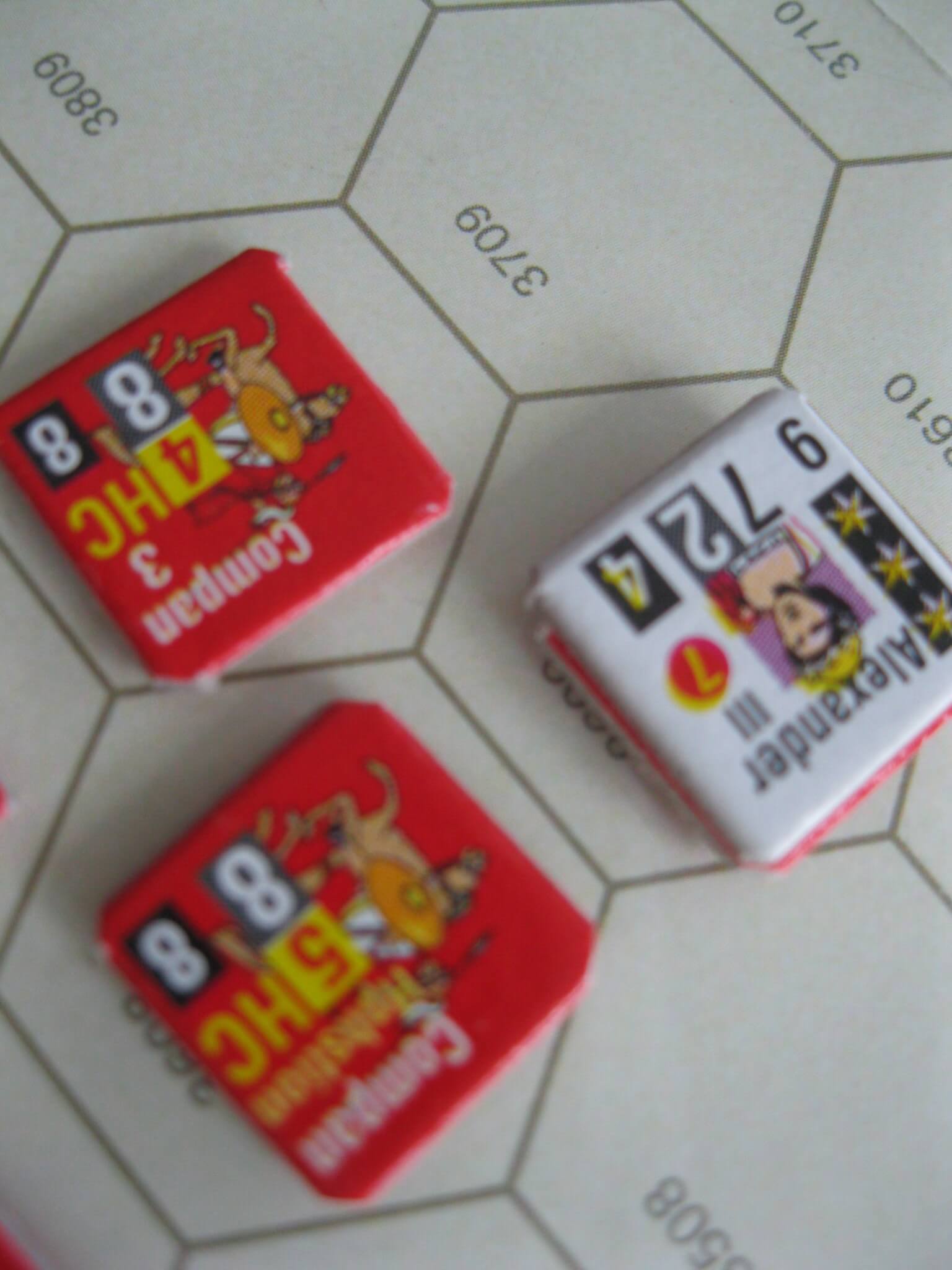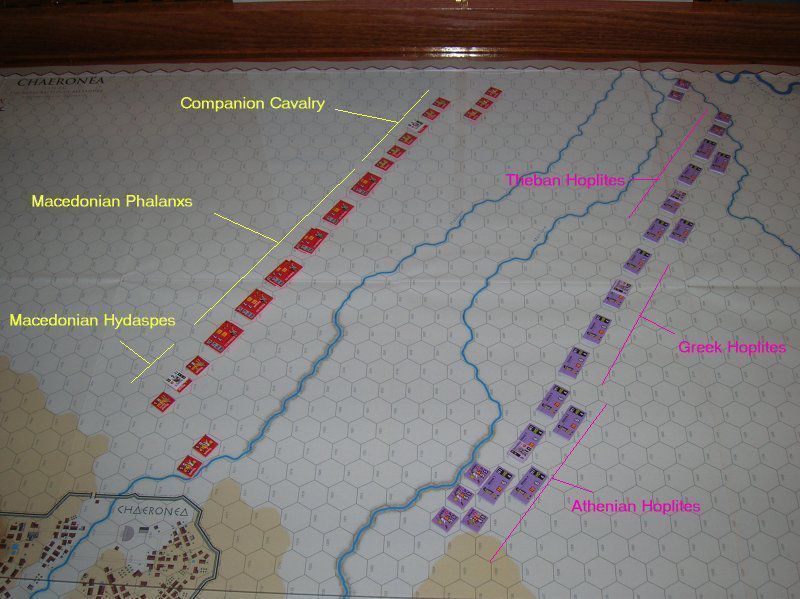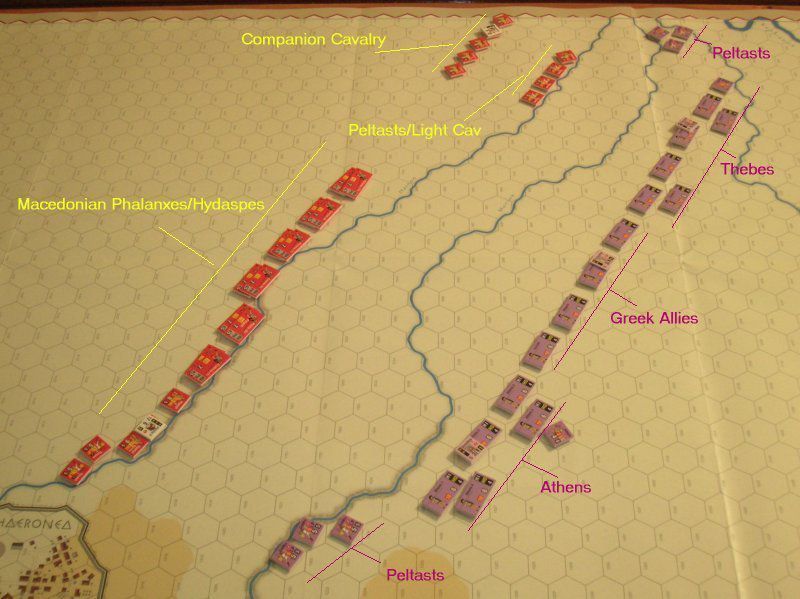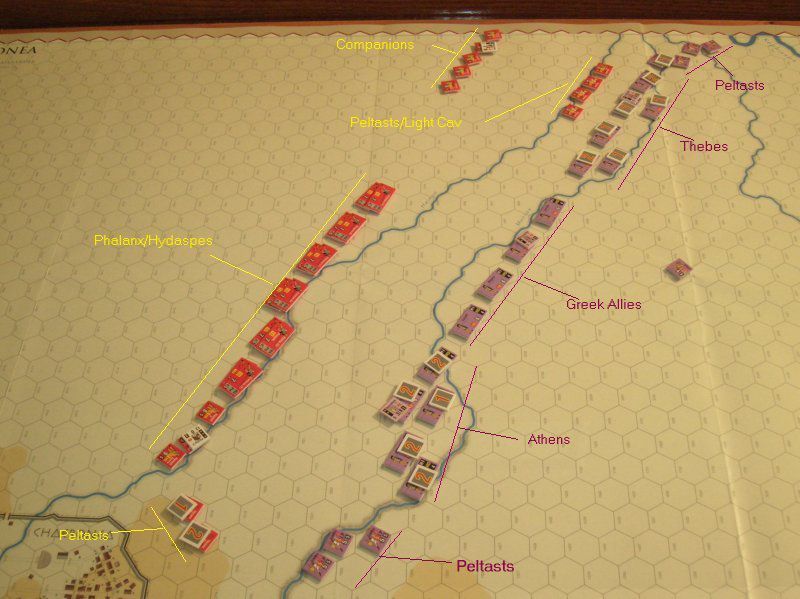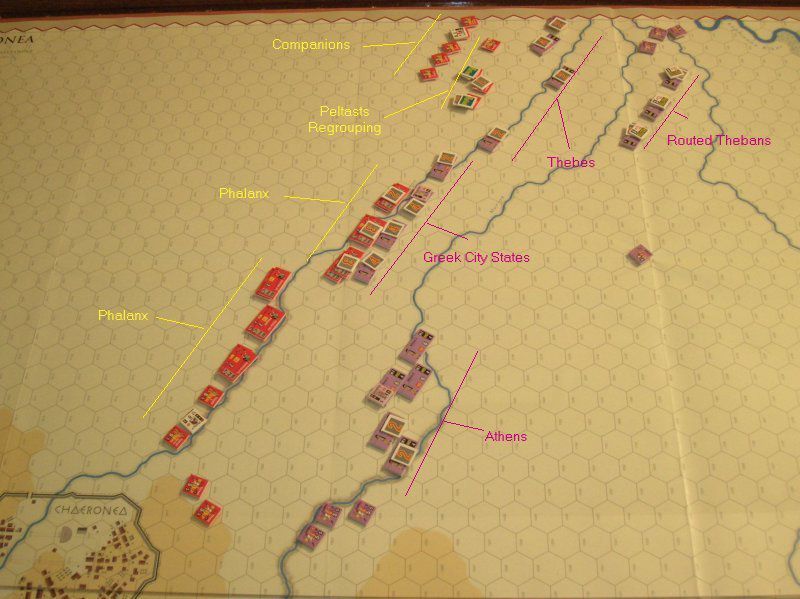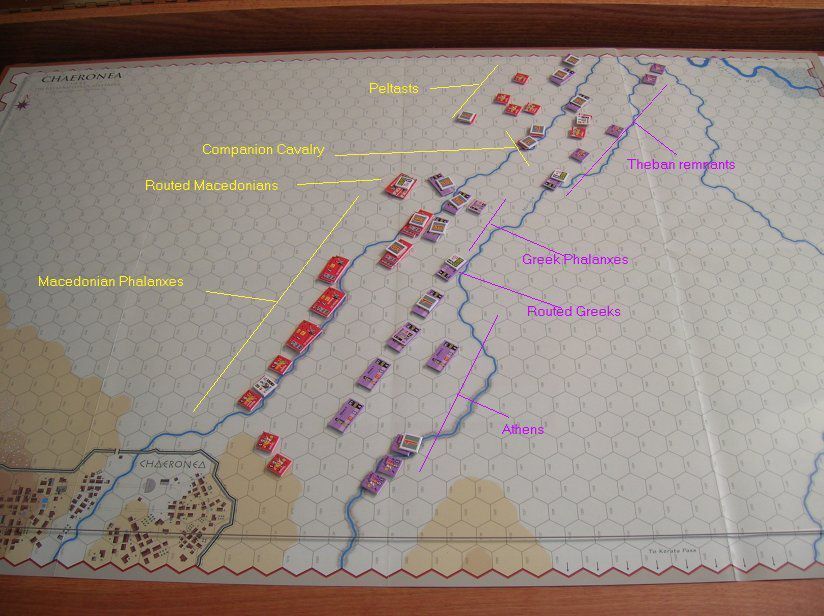Hi gang! Rob Tyson from over at BGG has shared his first ever After Action Report!
Featuring a classic game from the Ancients era – Alexander Deluxe:
This is my AAR for the Battle of Chaeronea 338 B.C. using GMT’s Great Battles of Alexander Deluxe. I’m fairly new to the system (used to play Simple GBoH previously), but I decided to add in the optional rule for The Hellenic Law of Inertia since I think it makes sense.
Initial Setup:
Here is a link to some info on the battle:
http://en.wikipedia.org/wiki/Battle_Of_Chaeronea
Turn 1:
The Greeks, seeing that they are outnumber in terms of cavalry, order the light cavalry unit on the left flank to move their ass to the right flank to join the only other Greek cavalry unit. Peltasts (a cross between light infantry and skirmishers) are sent forward. Otherwise, they hang tight to see what develops.
Philip of Macedon, commanding the phalanxes, moves them up to the stream, but doesn’t cross over, looking to use the steep slopes on certain sections to bolster his line. Alexander first orders his peltasts and light cavalry forward, with the Companions following behind.
Rout Points accumulated:
Greeks: 0/75
Macedonians: 0/105
(For those unfamiliar, the number to the left of the slash is the number of rout points an army has against it, due to the destruction of units/leaders. The number to the right is the point at which the army will Withdraw, thus conceding defeat.)
Turn 2:
The Greek Allies (all forces other than those of Athens and Thebes) see the opening in the Macedonian line between the phalanxes and the Companions, and decide to move forward, exploiting the hole. This action, to the consternation of the Athenians and Theban leaders, causes them to also move forward in order to maintain their lines and protect their flanks. This causes a problem for Athens and Thebes as their Hoplite formations must cross a steep sloped stream, inflicting cohesion hits and causing some units to slow down.
Alex sends his Peltasts across the stream, hoping that they will be able to harass and slow down the Thebans. The Companions remain in place mainly because of the damned edge of the map is secured by the Thebans. Though they may be heavy cavalry, stirrups did not exist at this time in the West, and as a result, charges into the front of infantry units will tend to be bad for cavalry. Gotta get around the flank! Meanwhile, Philip, seeing the Greek City states moving forward, trumps their leaders (an way to steal the initiative and prevent your opponent from gaining momentum) so as to prevent his right flank from being hit.
Rout Points:
Greeks: 0/75
Macedonians 0/105
Turn 3:
The Thebans take the lead and send this Hoplites out against the Peltasts. This forces the Peltasts back over the stream with the Hoplites hot on their tails (accumulating Cohesion Points along the way). The fight looks like it should go well for the Thebans, but the Pre-Shock cohesion checks go poorly, with one Hoplite formation routing, and in the ensuing combat, though most of the Peltasts are routed, Theagenes, the Theban commander, is mortally wounded, causing his units to lose control of their situation. Alexander rallies the routed Peltasts, and gets the remaining Peltasts and light cavalry units to use hit and run tactics with their javelins, eventually causing two more Hoplite formations to break under the stress. (Note: in this game, double length Hoplite/Phalanx units cannot be rallied once they break. Powerful units, but once they hit their breaking point, due to some bad die rolls, getting them back in order is just too much to handle in the time span of the scenarios.)
Meanwhile, the Greek City States move forward again, but are once more trumped by Philip, who sends half of his Phalanx units over the low banked streams to confront the Hoplites. They ended up locked in combat, with the denser Phalanx units getting the upper hand slowly but surely.
Rout Points:
Greeks: 56/75
Macedonians: 0/105
Turn 4 – Macedonian Victory:
With the Thebans in collapse, the Greek allies push on. They move one of their Hoplite formations (mislabeled as a Phalanx in the photo) and hit one of the Macedonian Phalanxes in the flank, causing it to rout. This however, is balanced out by one of the previously engaged Hoplite formations collapsing at the left end of the Greek allied line.
The Athenians hold back, straightening their lines and reorganizing (i.e., removing cohesion hits) after crossing the stream. The Athenians have yet to enter combat, which I’m sure will be the source of rumors in years to come.
With the Thebans in disarray, young Alex (finally!) sends to Companion Cavalry into the now porous Theban lines, causing further units to rout. With the Macedonian heavy cavalry now having free run of the field, the final nail is hammered into the anti-Macedonian coffin.
Rout Points:
Greeks: 80/75
Macedonians: 16/105
